Both Dutch Safety Board and Russia are not telling the truth on radar recordings
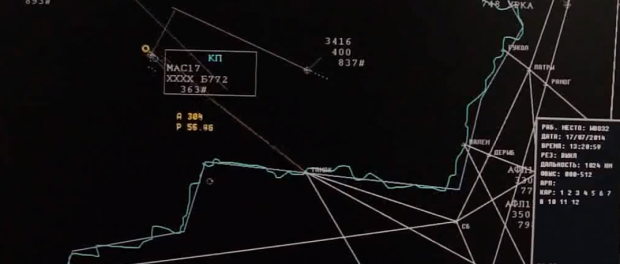
Dutch Safety Board (DSB) requested raw and processed primary radar data as well as raw and processed secondary radar recordings from the Russian State Air Traffic Management Corporation. (GKOVD)
DSB did not recieve the radar data which it requested. It got instead a video recording showing a blend of both processed primary and secondary radar recordings.
Russian Rosaviatsiya declared that Russia does not save primary radar into raw format. Instead it is saved in video format.
TL;DR
This blogpost will show both the Russian Federation as Dutch Safety Board are not telling the truth.
- DSB is twisting facts by stating Annex 11 states ATC centers should store radar recordings in raw format. ICAO is not clear about the format. In contrary, the English CAA states that ICAO Annex 11 is about recording the screen of the controller
- ICAO denies that it agrees with DSB’s position that raw radar data should be recorded
- Rostov Radar likely does have the ability to store raw radar but for tactical reasons does not hand over raw radar recording to DSB.
The conclusion is that this is a semantic issue. In the ICAO Annex 11 the wording used is ‘data’. There is no description of the word ‘data’. DSB translates data to ‘a file which can be read by a computer’ for investigation purposes. Russia translates ‘data’ to information displayed on an air traffic controller screen.
Introduction to radar and archiving
Radar is an acronym for RAdio (Aim) Detecting And Ranging
To understand the issue you need to know something about radar. There are two radar types:
- primary radar: the antenna sends out a radio signal. Each object large enough to be detected reflects the signal. This echo is detected by the radar antenna. So this type of radar is able to detect any flying object.
- secondary radar sends out radar signals to interogate a responder installed in an aircraft, helicopter or even a car. The transponder transmits data about the aircraft like flightnumber, unique id, speed and altitude. Secondary radar is a cooperative mode. If the transponder is switched off, radar will not detect the object. Transponders are installed in civil aircraft. Most jet fighers used in airforces do not have transponders installed.
This website has a some great explanation about radar.
DSB radar data types mentioned in report
The DSB report mentions three types of data
- raw data received by radar sensors (like a rotating radar antenna)
- the data processed for display
- the actual displayed data
I am not sure about the difference between 2 and 3. DSB was not willing to explain. I guess data mentioned under point 2 is for instance data from a single radar antenna after processing. The data displayed at the air traffic controller screen is filtered. For example non moving radar echo’s or small echo’s are removed as not relevant for the controller. Several sources like processed primary radar and processed secondary radar are then blended and displayed (data type 3)
Maybe a paper by one of the DSB empoyees might explain what the difference between data processed for display and the actual displayed data is.
Michiel Schuurman– Senior Air Safety Investigator at DSB, wrote an interesting paper titled Using “ASTERIX” in accident investigation
The paper mentions three types of replay
- Controller replay: presentation of the radar data on a radar display as used by the controller.
- Technical replay: replay of the recorded data using analyses and verification display.
- Investigator replay: raw analyses of the recorded unfiltered data which is than displayed
I believe controller replay is what DSB calls ‘the actual displayed data’ in the DSB report
Technical replay is likely what DSB calls ‘the data processed for display’
Investigator replay is what DSB calls ‘raw data received by radar sensors’
Radar sensor (antenna) output
Most modern radar sensors like a radar antenna transport the radar echo’s in a digital format to the air traffic control center processing unit. This is a standard message format developed by Eurocontrol and named ASTERIX.
ASTERIX is basically a way to store a plot (radar return) in a standardized way. It is a packet with a message (location of the echo) added with metadata on the echo (identification of the radar antenna, which type of radar (primary/secondary) , exact type of the echo. The ASTERIX formated packet is sent over standard networking protocols (like TCP/IP) to an air traffic control center for processing.
The data received by the antenna is called raw data.
Various input sources (radar, weather radar) are mixed by the computer (radar data processing system) . The computer composes an image shown to the air traffic controller. This image has noise like non-moving echo’s removed and adds for example a predicated track for the target as well as the last echo’s of the target.
One of the other tasks of the computer is predicting possible conflicts when two radar plots are closing in on eachother. The computer will then provide an alarm to the air traffic contoller.
The screen output is often recorded by air traffic contol centers for archiving purposes (like for investigation of incidents and accidents)
An alternative protocol for ASTERIX is called Radar Data Interchange Format (RDIF)
Common radar recording methodes
There are two recording methodes in use for archiving surveillance/radar data.
- recording operational screens at the glass (ATG)
- recording data obtained through the wall (TTW)
At the glass is a recording of what was displayed at the screen of the controller. This is a video like Russia supplied to the DSB. In many cases the input of the controller like when he manually measures a distance between targets is recorded as well.
Through the wall means that radar data is recorded and archived before it is processed. The other name is raw radar data.
DSB issues with Russian Federation on radar recording
DSB has expressed in the final report two issues with procedures of radar recording by Russia.
First of all Russia provided no radar data. Data in the sense of a computer file with information on tracks of aircraft. This computer file could be used by DSB to replay what exactly was detected by radar.
Instead Russia provided a video recording of the radar screen as seen by the controller.
- Russia states that they did not save radar data because the incident took place outside the territory of Russia . This issue is documented at paragraph 3.15

- DSB states in one of the Appendix that Russia should have provided raw radar data to DSB. However, ICAO Annex 11 does not state in which format surveillance data should be stored. We will have a look at the Annex later in this blog.

Rostov Radar recording capabilities indicates raw data storage
The air traffic control center of Russia located in Rostov uses the Spanish Indra Aircon 2000 system. Indra was awarded a modernization of Rostov radar in 2008. The project was likely finished before July 2014. The screenimage in the DSB final report Appendix I shows the Indra log on a video handed over by Russia.
So it is extremely likely the Indra primary radar stations which feed the ATC computer were able to store all the echos in ASTERIX format. As explained, ASTERIX is raw radar data.
Russia made public which shows a combined primary and secondary radar image.
Russia also submitted to DSB a video showing both primary and secondary radar. Screenshots of the video are published in the DSB final report.
The images below show screenshots of the two videos handed over by Russia. The screenshot left is documented in the DSB final report. The time is 13:20:47. The screenshot on the right is made at 13:20:47 as well. The yellow numbers are different in both screenshots. An indication that these are two different replays based on raw radar data.
The yellow numbers in the next two screenshots are different as well, despite the screenshots were made at the same moment. Time of radar recording is 13:20:58
If Russia is able to produce two different videos this likely means raw radar data was available and has been recorded and archived.
There is another screendump showing primary radar capabilities. This image was published in various Russian media. It could be fake but for now lets assume it is real. It shows primary radar echos on a computer display. This is not a typical display in use by controllers. It looks like a console to replay raw radar data.
Russia states they record primary radar only on video
Oleg Storchevoy, the deputy head of the Federal Air Transport Agency, wrote a letter to the Dutch next of kin. The next of kin actually did not receive a letter or email nor fax. They had to read the response on the website of Russia Today.
Storchevoy wrote the following about radar.
As for primary radar data, we hereby officially maintain that Russia provided the Dutch Safety Board with all available primary radar data tracing Flight MH17 as early as August 2014, which was right after the tragedy. We did not impose any conditions or restrictions regarding further use and disclosure of radar data, records of phone conversations and other data we submitted to the Dutch Safety Board (DSB) at its request. Moreover, Russia has stored all that data to this day, and is willing to provide it once again to the relevant authorities.
For the sake of clarity, I must specify that Russia submitted primary radar data to the DSB in the form of a video recording capturing a Russian air traffic controller’s display. It should be explained that primary radar data can be stored in the form of videos, which is consistent with ICAO standards. It should be explained that Russian air traffic authorities store primary radar data exclusively in the form of videos, which is consistent with ICAO standards. That said, the Dutch Safety Board’s final report does not suggest that this fact might have somehow affected the findings of the technical inquiry into the circumstances and the cause of the crash.
Russian response to the DSB report
Before the final report was published by DSB, participating states were able to comment on the draft final report. This capture shows the response of Russia. Russia does not agree to the statement of DSB that Russia does not comply to ICAO Annex 11.
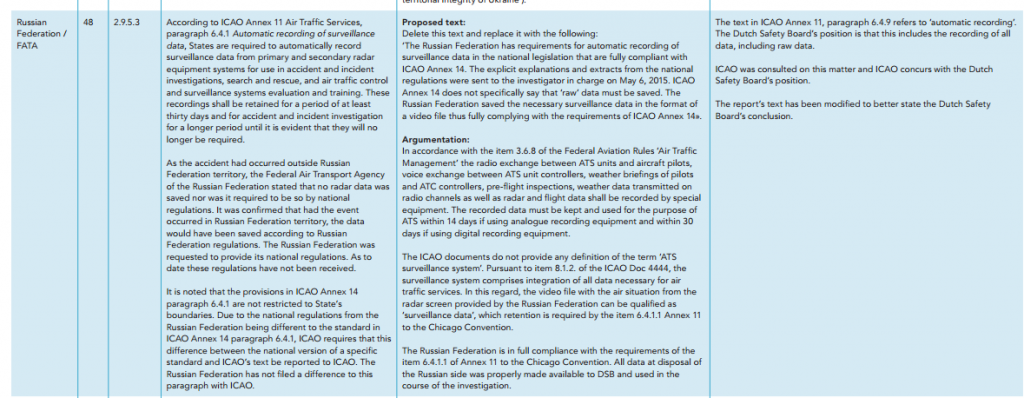
ICAO Annex 11 does not state that raw rader recording is required
Let us have a look at what ICAO states about radar data.
Annex 11 paragraph 6.4.1 states that surveillance data (like primary radar data) should be automatically recorded and retained for at least 30 days.
There is no mention at all about the format the recording should be.
This is confirmed in an interview with ICAO which took place in January 2016. Members of the Dutch Parliament had an interview with ICAO. The transcript of the interview is here.
ICAO also states in the interview that ICAO has guidelines. What ICAO states in an Annex are guidelines. Not hard law. The hard law is the legislation of a nation.
English Civil Aviation Authority confirms Annex 11
The English Civil Aviation Authority (CAA) has a description of Annex 11, chapter 6, paragraph 6.4.1 here
It clearly states in Note 2 that Annex 11 means data displayed to the controllers.
Common radar recording practices
Most modern countries perform a digital recording of the radar data which is archiving the raw radar data. In that sense it is understandable that DSB requires and expected to have raw radar data.
The response of ICAO on archiving of radar data
DSB states in their final report that ICAO agrees with DSB that Russia should have recorded raw radar data.
So I contacted ICAO for verification of that statement. The response of ICAO was
ICAO does provide some guidance, however it is by no means prescriptive and simply clarifies that recorded data should support investigations, for instance where the purpose is to replay the scenario as might have been seen or experienced by the air traffic controller.
This would include, for instance, synchronizing the displayed radar data with the voice communications (air-ground and grounds-ground), that are also required to be recorded.
ICAO was interviewed by the Dutch parliament on various items. For example radar recordings and safety.
This is an english transcript of the interview.
The response of DSB
I contacted the spokeswoman of Dutch Safety Board, Sara Vernooij. I asked here the question why DSB states that ICAO agrees with DSB that radar data should be in raw format. I also asked he to provide me a name of an ICAO employee who stated that ICAO agrees with DSB.
As usual DSB responded by saying DSB cannot comment on questions which are not answered in the final report.


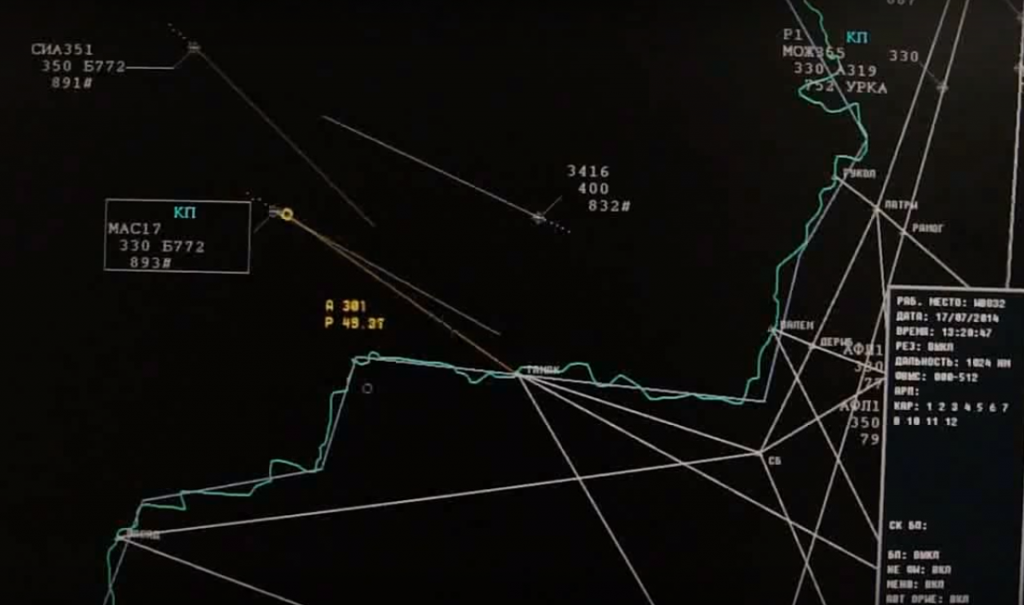
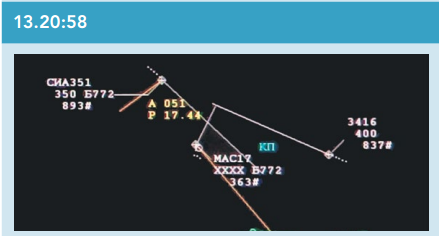
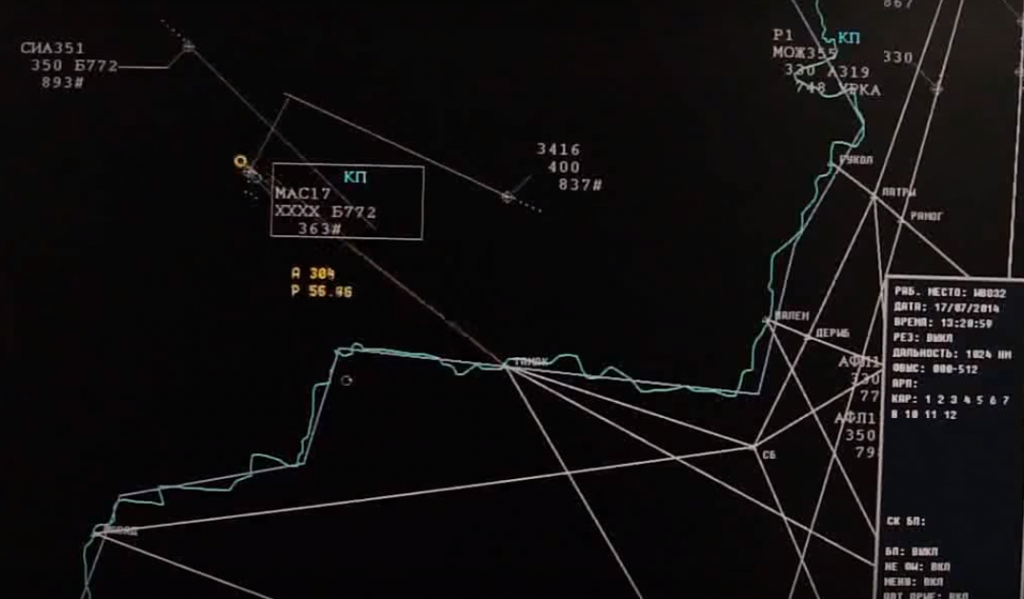

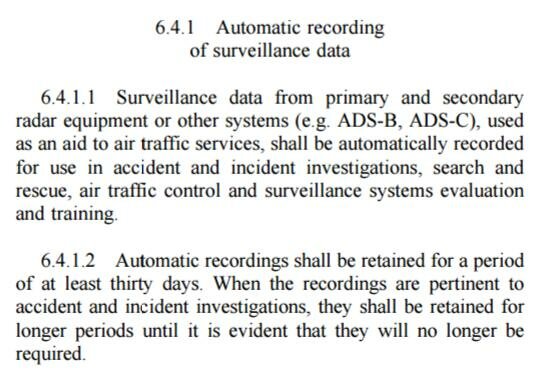


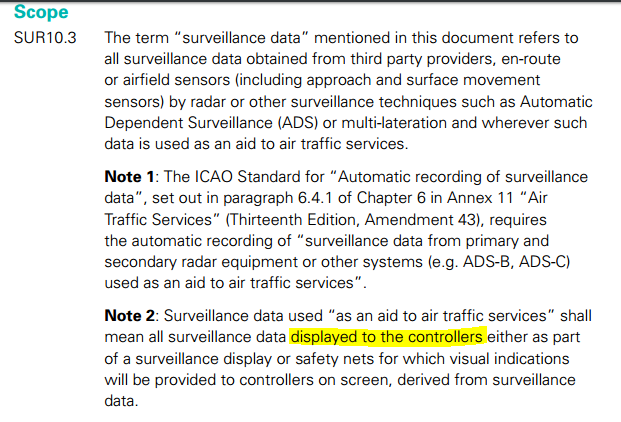
Marcel, a few comments.
1) Russia stated its processing in normal use in the ATC center included the exclusion of returns below 5000 m. This point has been endlessly argued here about what the radar should have detected, but the basic point remains that Russia claims the images provided were filtered to ignore objects at low elevations. This makes perfect sense. The center’s function is supposed to be providing guidance to civilian flights at cruising altitude, not attempting to detect and worry about low altitutde objects.
2) The primary returns in the video and on the Rostov ATC monitor were almost certainly also filtered to ignore all objects below a certain size. Evidence of this comes from the fact that the radar files to show the primary return in freefall of even large parts of the debris, such as the cockpit, let alone all the relatively large pieces scattered about.
3) What is missing by not having the unfiltered raw primary radar returns is the ability to detect (a) the BUk missile, (b) any military aircraft without transponders, (c) any small objects in the air, (d) the debris of the break-up of MH17, (e) objects in the air below 5000 m. Compare for example to images of TWA800’s break-up from radar, which captured the primary return tracks of TWA800 debris, military aircraft, and even ships in the Atlantic Ocean.
http://ru.encydia.com/en/Рейс_800_TWA
http://www.flight800.org/radar_evidence.htm
And also released video screen captures from JFK of TWA 800 which looks just like what Russia provided publicly:
http://whatreallyhappened.com/RANCHO/CRASH/TWA/RADAR2/radar2.html
One can obviously understand why the raw data is wanted instead of the mere ATC screen video!
It seems to me that you don’t see two different recordings, but two different screens with different views of the same data. The yellow numbers in the screen shots from the DSB belong to a different plane, SIN 351. The yellow numbers in the other screen shots belong to MH17.
About Russia’s radar data. See the video of Storchevoi’s briefing (in October 2015) at 1:01:14:
“By data of primary processing we saw and they observed presence of not identified echos”
‘they’ means in the statement’s context the DSB. The MoD’s data were not used by the DSB (at 1:02:24 on Storchevoi’s video).
There was mentioned the ‘object N3505’ at the MoD’s briefing in July 2014.
Retrieved:https://publicapps.caa.co.uk/docs/33/CAP%20670%2023%20May%202014.pdf
After SUR10.3 comes a General requirements
SUR10.4
With effect from 31 December 2012 it shall be mandatory for all
ATS Units which use surveillance data as an aid to air traffic services
to have in place surveillance data recording systems for recording
operational screens at the glass (ATG) and surveillance data obtained
through the wall (TTW) together with the ability to provide a time
synchronised replay of voice and surveillance data.
Why is the UK’s aviation regulator of interest here? Or do you read there also about some ICAO requirement like Annex 11 paragraph 6.4.1. See also https://whathappenedtoflightmh17.com/both-dutch-safety-board-and-russia-are-not-telling-the-truth-on-radar-recordings/